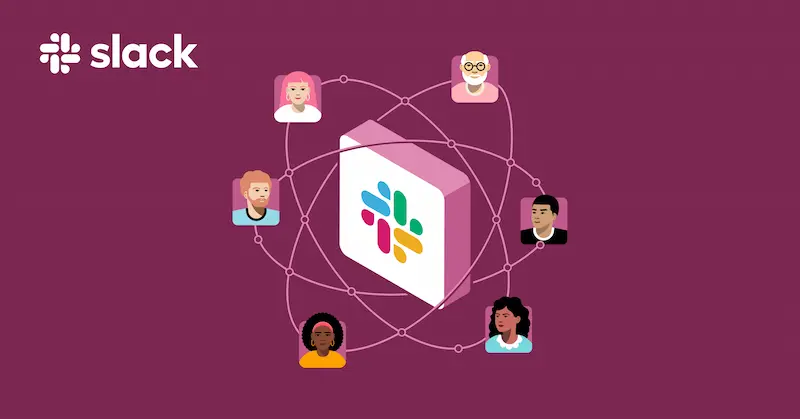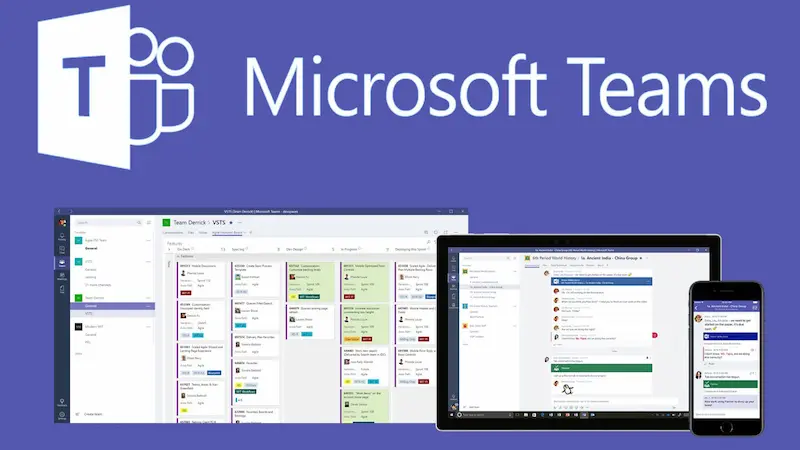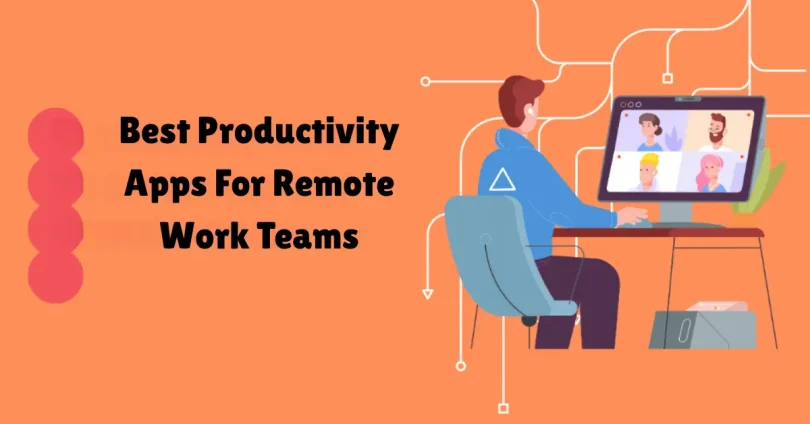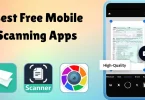Remote work sounds like a dream—flexible hours, no commute, and the freedom to work from anywhere. But without the right systems, it can quickly turn chaotic. Notifications pile up, browser tabs multiply, and hours disappear while you juggle emails, Slack messages, and Zoom calls.
Take Sarah, a remote marketing manager: she plans to draft a campaign strategy but ends up spending the morning on emails, calls, and LinkedIn research—her original task barely touched.
So, what are the best productivity apps for remote work teams, and can they really 10X your performance? Yes—but only when paired with smart habits. Top remote professionals aren’t superhuman—they simply use the right tools to stay organized, focused, and productive.
Here’s a look at six high-impact apps that can transform your remote work experience.
1. Slack – Streamline Communication

Communication is the backbone of any remote team. Slack makes it simple to connect in real-time while keeping conversations organized. Unlike email, Slack’s channels and threads keep work-related discussions separate from casual chats.
Why Slack works:
- Organized channels: Keep each project, team, or topic in its own space.
- Integration-ready: Works seamlessly with Google Drive, Trello, Zoom, and over 2,000 other apps.
- Reduced email clutter: Teams can communicate instantly without sending endless emails.
Pro tip: Use Slack’s “Do Not Disturb” feature to block notifications during deep work sessions. You can also set up automated reminders to keep projects on track.
2. Trello – Visual Task Management
Trello transforms complicated workflows into easy-to-manage visual boards. Each task is a card that you can move through stages like “To Do,” “In Progress,” and “Completed.”
Why Trello works:
- Visual clarity: Quickly see the status of multiple projects at a glance.
- Drag-and-drop simplicity: Move tasks effortlessly between stages.
- Flexible for teams of any size: Works for freelancers, small teams, and large organizations.
Pro tip: Combine Trello with automation tools like Butler to automatically assign tasks, set due dates, or move cards based on triggers.
3. Asana – Keep Projects on Track
Asana is perfect for teams managing complex projects. It allows you to plan work, track tasks, and set deadlines with precision. You can visualize timelines, create dependencies between tasks, and ensure that nothing falls through the cracks.
Why Asana works:
- Centralized project hub: All project details are in one place.
- Timeline & workload views: Prevent bottlenecks and distribute work evenly.
- Customizable for different workflows: Great for marketing campaigns, product launches, or software development.
Pro tip: Use Asana’s goal-setting feature to align tasks with team objectives. This ensures everyone knows how their work contributes to the bigger picture.
You may also like to read this:
How The Impact of 5G on Gadgets Is Changing Technology
AI Ethics Developments And Challenge Explained
7 Best To-Do List Apps For Students To Stay Organized
Best Affordable Smart Home Devices List For Budget Homes
Best AI Writing Assistant Tools For Bloggers – 2025 Review
4. Notion – All-in-One Workspace
Notion is more than just a note-taking app—it’s a flexible workspace that can manage tasks, track projects, and store team knowledge. Think of it as your team’s central brain.
Why Notion works:
- Customizable templates: Build dashboards, project trackers, and databases tailored to your workflow.
- Centralized documentation: Keep guides, SOPs, and meeting notes in one accessible place.
- Real-time collaboration: Team members can edit pages simultaneously, keeping everyone aligned.
Pro tip: Create a “Team Wiki” in Notion to centralize knowledge. New hires can quickly onboard without asking repeated questions, saving everyone time.
5. Zoom – High-Quality Video Communication
Face-to-face communication is essential for team cohesion, even when remote. Zoom provides high-quality video, audio, and screen-sharing capabilities, making meetings more productive and interactive.
Why Zoom works:
- Reliable video and audio: Clear communication without technical distractions.
- Screen sharing & recording: Collaborate efficiently, and save recordings for team reference.
- Integrates with calendars: Simplifies scheduling and avoids meeting conflicts.
Pro tip: Use Zoom breakout rooms for brainstorming sessions or focused group discussions. It allows smaller teams to collaborate effectively during large meetings.
6. Focus@Will – Supercharge Concentration
Even the best apps won’t help if you can’t focus. Focus@Will is a music app scientifically designed to boost concentration. It uses background music and soundscapes to help your brain enter a flow state.
Why Focus@Will works:
- Scientifically optimized tracks: Music designed specifically to improve focus.
- Reduces mental fatigue: Helps maintain concentration during long work sessions.
- Supports deep work: Perfect for tackling complex tasks without interruptions.
Pro tip: Pair Focus@Will with the Pomodoro technique—25 minutes of deep work followed by a 5-minute break. You’ll notice a significant improvement in productivity.
7. Microsoft Teams – All-in-One Communication & Collaboration

Microsoft Teams is a robust platform that combines chat, video conferencing, and file sharing. It’s designed to keep teams connected, no matter where they work.
Why it works:
- Integrated with Microsoft 365: Seamlessly connects with Word, Excel, PowerPoint, and SharePoint, allowing teams to collaborate on documents without switching apps.
- Organized channels and threads: Keep conversations structured by project, department, or topic, reducing confusion.
- Supports large team collaboration: Video calls, screen sharing, and file storage make group work smooth and efficient.
Pro tip: Schedule recurring project check-ins and use Teams’ shared document libraries to centralize files, ensuring everyone is on the same page.
8. Monday.com – Customizable Project Management
Monday.com is a highly visual and flexible project management tool, suitable for teams of any size. It’s ideal for tracking tasks, progress, and team workload in one place.
Why it works:
- Custom workflows: Adapt boards for any type of project, from software development to marketing campaigns.
- Dashboards and visual trackers: Monitor progress, timelines, and team performance at a glance.
- Automation capabilities: Reduce repetitive tasks like sending reminders or moving tasks across boards.
Pro tip: Set up automated notifications for task updates, overdue deadlines, or workflow transitions to keep projects running smoothly without micromanagement.
9. ClickUp – All-in-One Productivity Platform
ClickUp is an all-in-one platform that combines task management, documents, goals, and time tracking. It’s designed to replace multiple tools with one centralized workspace.
Why it works:
- Multiple views: List, board, calendar, and Gantt charts let teams visualize work in the way that suits them best.
- App integrations: Connects with over 1,000 apps, including Slack, Google Drive, and Zoom.
- Highly customizable: Tailor statuses, fields, and dashboards to match your team’s workflow.
Pro tip: Use ClickUp’s goals and milestones to align daily tasks with long-term objectives, ensuring your team stays focused on what matters most.
10. Evernote – Note-Taking and Knowledge Management
Evernote is a versatile note-taking and knowledge management tool that keeps ideas, documents, and research organized in one searchable place.
Why it works:
- Centralized note storage: Keep meeting notes, brainstorming ideas, and project documents together.
- Advanced search and tagging: Quickly find notes and information without sifting through endless files.
- Collaboration-friendly: Share notebooks and collaborate in real-time with teammates.
Pro tip: Create a separate notebook for each project or client, making it easy to track progress and ensure nothing is lost.
Building a Productivity System That Works
These six apps are powerful individually, but when combined with intentional work habits, they can completely transform your remote work environment. Here’s how to maximize their impact:
- Set boundaries: Schedule focused work periods and use apps like Slack and Zoom strategically.
- Centralize tasks: Keep all projects and documents in tools like Trello, Asana, and Notion.
- Optimize communication: Use Slack for quick updates, Zoom for in-depth discussions, and Notion for knowledge sharing.
- Protect focus: Minimize distractions with Focus@Will, turn off unnecessary notifications, and practice time-blocking.
Imagine this: it’s 8 AM, your workspace is optimized, notifications are under control, and your team is fully aligned. Four hours later, you’ve accomplished more than you used to in an entire day. Deep work isn’t just possible—it becomes inevitable.
Conclusion: Best Productivity Apps For Remote Work Teams
Remote work doesn’t have to be a struggle. The best productivity apps for remote work teams empower you to work smarter, not harder. By integrating these tools into a disciplined workflow, you can enhance focus, streamline communication, and achieve higher output.
With Slack, Trello, Asana, Notion, Zoom, and Focus@Will at your disposal, your team can transform remote work from a source of stress into a powerhouse of efficiency. Deep work, clarity, and productivity aren’t optional—they become the standard.
Start implementing these apps today and watch your team go from surviving remote work to thriving like never before.
FAQs
1. What are the best productivity apps for remote work teams?
The top apps include Slack for communication, Trello for visual task management, Asana for project tracking, Notion for an all-in-one workspace, Zoom for video meetings, and Focus@Will for improving concentration.
2. Can productivity apps really improve remote team efficiency?
Yes! When used correctly, these apps streamline communication, centralize tasks, and reduce distractions, helping remote teams work smarter and increase output.
3. Is Slack better than email for remote teams?
For most teams, yes. Slack allows instant communication with organized channels and threads, reducing the clutter and delays often caused by email.
4. How can Trello and Asana help manage tasks?
Trello provides visual boards to track task progress, while Asana offers timelines, dependencies, and milestones for complex projects. Together, they help teams stay organized and meet deadlines.
5. Can Notion replace multiple tools for a remote team?
Yes. Notion combines notes, tasks, databases, and project tracking in one platform. It’s ideal for documentation, knowledge sharing, and team collaboration.



